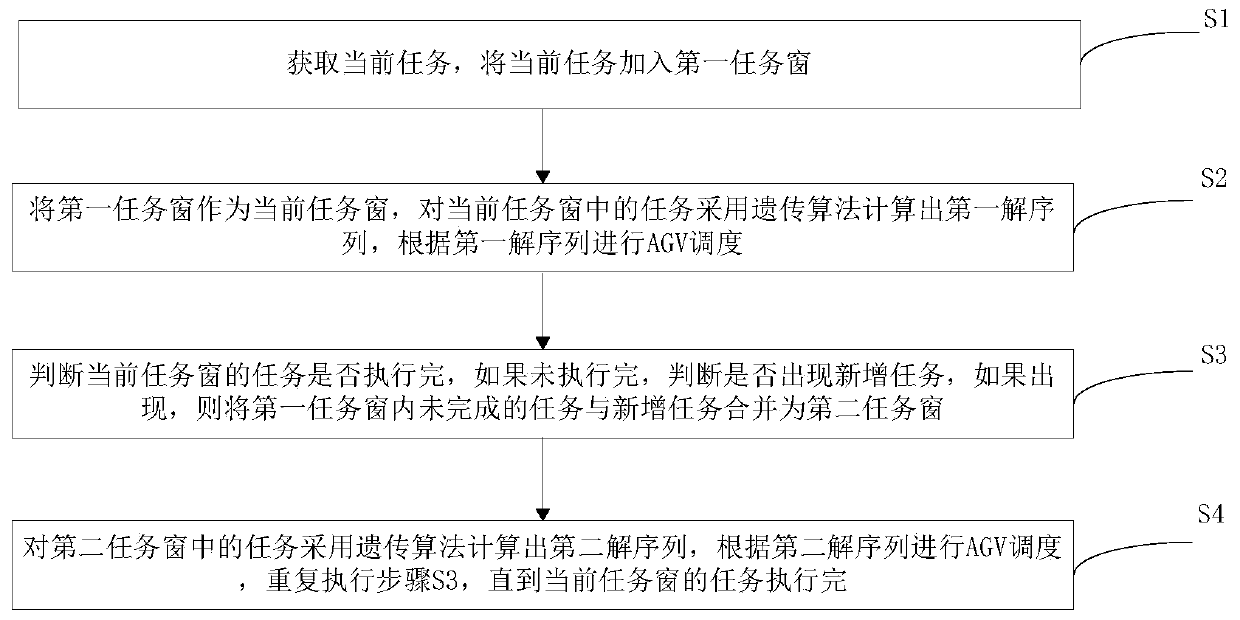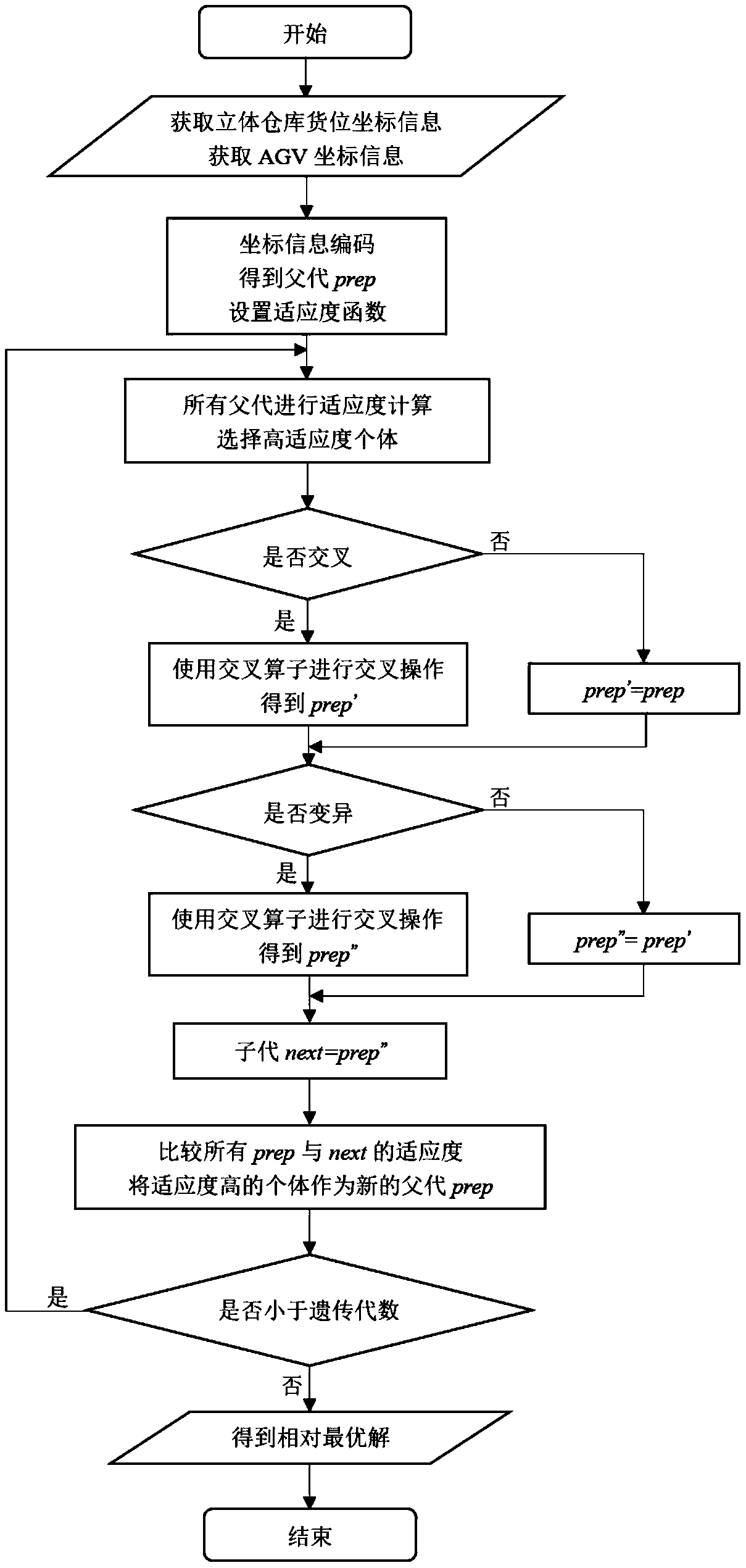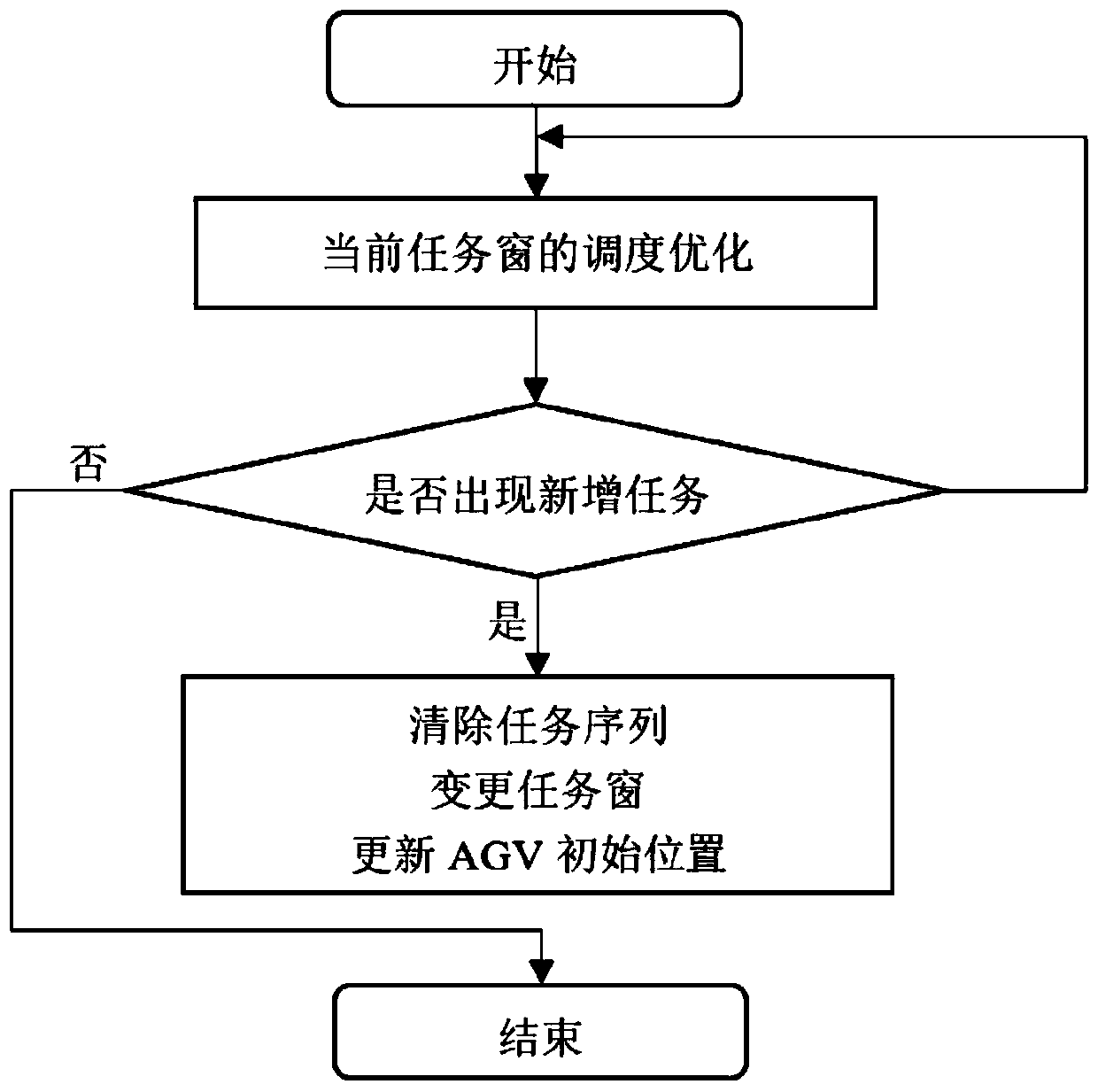An AGV dynamic scheduling method and device based on a variable task window
A dynamic scheduling and task technology, applied in genetic rules, genetic models, data processing applications, etc., can solve problems such as poor scheduling effects of scheduling methods, achieve good scheduling optimization effects, optimize effects, and solve poor scheduling effects
- Summary
- Abstract
- Description
- Claims
- Application Information
AI Technical Summary
Problems solved by technology
Method used
Image
Examples
Embodiment 1
[0034] This embodiment provides an AGV dynamic scheduling method based on a variable task window, please refer to figure 1 , The method includes:
[0035] First, perform step S1: obtain the current task, and add the current task to the first task window.
[0036] Specifically, the scheduling method in this embodiment is applied to the direct-type three-dimensional warehouse. Unlike ordinary three-dimensional warehouses, the AGV trolley in the direct-type three-dimensional warehouse can walk freely under the shelves when it is empty, which is more convenient for AGV operations. The current task can be judged according to task allocation or a given time. The number of current tasks is set according to specific application conditions. The first task window is a task set block.
[0037] Then, step S2 is performed: the first task window is used as the current task window, the genetic algorithm is used to calculate the first solution sequence for the tasks in the current task window, and t...
Embodiment 2
[0102] This embodiment provides a device for an AGV scheduling method based on a variable task window, please refer to Figure 8 , The device includes:
[0103] The obtaining module 801 is used to obtain the current task and add the current task to the first task window;
[0104] The first scheduling module 802 is configured to use the first task window as the current task window, use genetic algorithm to calculate the first solution sequence for the tasks in the current task window, and perform AGV scheduling according to the first solution sequence;
[0105] The merging module 803 is used to determine whether the tasks in the current task window have been executed. If they have not been executed, determine whether there is a new task. If they do, then merge the unfinished tasks in the first task window with the new tasks into the second Task window
[0106] The second scheduling module 804 is configured to calculate a second solution sequence using genetic algorithms for tasks in th...
PUM
 Login to View More
Login to View More Abstract
Description
Claims
Application Information
 Login to View More
Login to View More - R&D
- Intellectual Property
- Life Sciences
- Materials
- Tech Scout
- Unparalleled Data Quality
- Higher Quality Content
- 60% Fewer Hallucinations
Browse by: Latest US Patents, China's latest patents, Technical Efficacy Thesaurus, Application Domain, Technology Topic, Popular Technical Reports.
© 2025 PatSnap. All rights reserved.Legal|Privacy policy|Modern Slavery Act Transparency Statement|Sitemap|About US| Contact US: help@patsnap.com



